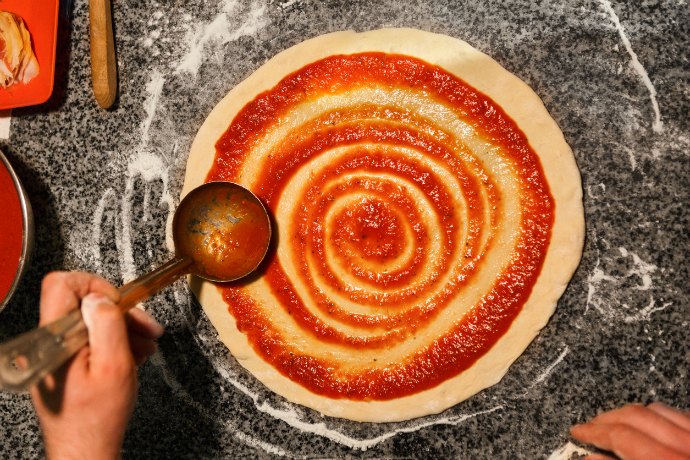How to Make Delicious Pizza at Home
Posted by Julie on Jul 27th 2016
Pizza delivery can be a lifesaver in a pinch, but it's the convenience we love. If delicious taste is what you're after, you'll want to learn how to make pizza at home. Fortunately, there are plenty of recipes out there for pizza dough and sauce, and lots of smart tips and tools available to help you achieve fantastic results.
How to Make Pizza at Home: Homemade Dough
Dough is the foundation of your pizza. Crust is more than a vehicle for your toppings; it should be just as tasty as the rest of your pizza. Therefore, homemade pizza dough is a must.
Recipes for making pizza dough vary widely. Some call for bread flour, others use all-purpose flour, and a few recommend Italian pizza flour. For the best taste, dough should be refrigerated for several hours. This is called proofing, and it allows the dough to rise more slowly and the flavor to develop more fully. It may take some trial and error to settle on a pizza dough recipe, and you may spend some time tweaking the details. Consider it a delicious experiment.
We checked out dozens of pizza dough recipes, and these two are our top choices: The Best NY Style Pizza Dough from Feeling Foodish, and a recipe on Lucky Peach from the Roberta's cookbook, an iconic Brooklyn pizzeria. Highly-recommended recipes like these are a great start to making pizza at home.
One final note: The majority of homemade pizza dough recipes we found cautioned strongly against rolling out the dough with a rolling pin. A rolling pin "degasses" the dough, eliminating the air bubbles that give you a light and crispy crust. Pull or stretch the dough by hand for best results.
How to Make Pizza at Home: Homemade Sauce
While homemade pizza dough involves a whole host of variables, sauce seems to boil down to one fundamental question: Cook it or not?

We're not going to come down on either side of this debate. Instead, we consider making homemade pizza sauce to be another phase of this delicious experiment. That's why we've chosen both kinds of sauce recipes to share. However, those who advocate for leaving the tomatoes uncooked are far more vocal than those who prefer cooked tomatoes in their sauce.
On the pro-cooking side, this recipe comes from The Food Lab at Serious Eats. It calls for simmering tomatoes, basil and onion halves with garlic and spices in a combination of olive oil and butter. Remove the onions and basil stems before spreading the sauce on the pizza crust.
Sauce recipes using uncooked tomatoes can be super simple or more labor-intensive. This recipe inspired by Roberta's includes only tomatoes, olive oil and salt. On the other hand, this one from Chef Andrew Zimmern is modeled on another Brooklyn pizzeria's recipe, and it's far more detailed. Either way, crush the tomatoes by hand, or use an immersion blender to puree them.
How to Make Pizza at Home: Grill or Bake?
The final hurdle to making pizza at home is how to cook it. Most of us don't own a restaurant-quality wood-fired pizza oven. So our choice is between baking pizza in the oven or grilling it outside.
Grilling pizza is the better option to approximate the results of a wood-fired oven. A grill is much hotter than your oven, and it can create that signature char you see on restaurant pizzas. However, because of the grill temperature, you'll need to work quickly so your pizza doesn't overcook. That means you'll need to have all of your toppings and tools at the ready. The Kitchn has a helpful step-by-step guide for reference.
But not everyone has a grill. Even if you do, you may not want to fire it up in January. Your oven can work well too, with a few tips. First, preheat your oven for at least half an hour at the hottest temperature setting below broil. If you have a pizza stone, place it in the oven before you preheat. Otherwise, you can bake pizza on the back side of a baking sheet that's also been preheated.
 Free shipping over $49
Free shipping over $49










